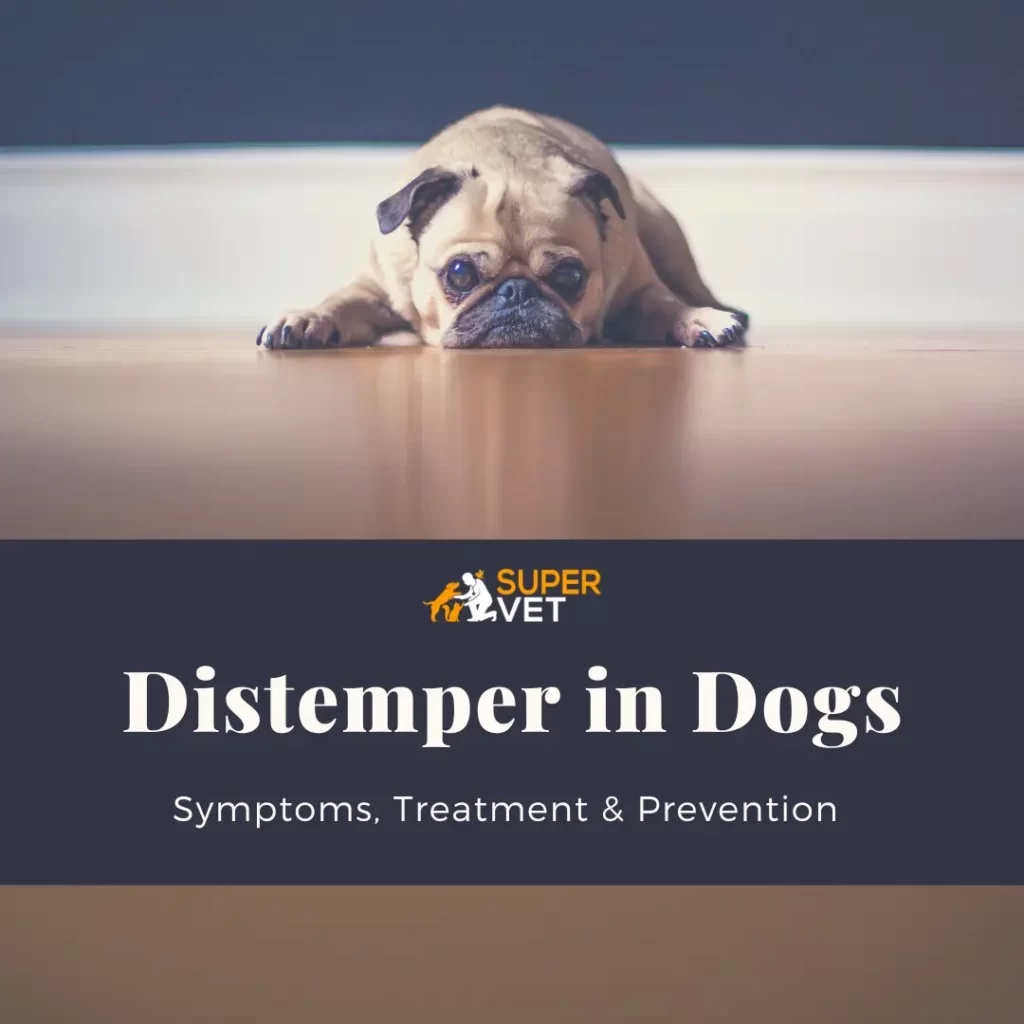Everything You Need to Know About Canine Distemper in Dogs.
As a concerned pet owner, there are a lot of things to think about when you have a dog, and one of the most important is their health and vaccinations. There are many different types of vaccines out there and it can be hard to keep track of them all. But, one that you should definitely be aware of is distemper.
While there are many dangers that our furry friends have to face, one of the most deadly and widespread is canine distemper. Often referred to as the “silent killer”. This disease is particularly dangerous because it can be difficult to spot early on. By the time symptoms appear, it’s often too late for treatment.
Distemper in dogs is a potentially fatal disease that can cause a wide range of symptoms. This serious disease is caused by a virus and can affect dogs of all ages. Early diagnosis and treatment are essential for the best result. So it’s important to know what to look for and how to protect your pet.
In this post, we’ll discuss the following issues:
- What is Canine Distemper in Dogs?
- What are the Symptoms of Distemper in Dogs?
- How is Distemper treated?
- How can you prevent your dog from contracting Distemper?
What is Distemper in Dogs?
Canine distemper is a serious, contagious disease caused by a virus that attacks the nervous system, urogenital, gastrointestinal, and respiratory systems of dogs. Distemper in dogs is caused by the Paramyxovirus and is closely related to the Rinderpest and Measles viruses.
It mainly affects dogs, but can also infect ferrets, skunks, and raccoons. Early signs of the disease include fever, cough, runny nose, and eye discharge. The virus can cause seizures and paralysis in severe cases.
The virus is highly contagious and can spread quickly through contact with infected animals or their secretions (such as urine or saliva). Treatment involves supportive care to help your dog recover from the illness and Prevention is only key.
What are the Symptoms of Distemper in Dogs?
One of the most important things to know as a dog owner is how to recognize the signs and symptoms of distemper in dogs. This disease can be very serious, and even fatal, so it is important to be able to identify it early so that you can get your dog the treatment they need.
It displays a wide variety of symptoms depending on the advancement of the disease in their bodies. Once a dog is infected by the virus, it will spread from the lymphatic tissue of the respiratory tract to the central nervous system, resulting in two stages of symptoms.
Stage 1:
The most common sign of distemper is a runny nose and watery to pus-like discharge from his eyes, but it can also cause fever, diarrhea, vomiting, and seizures. Most dogs develop a fever around 3 to 6 weeks after being contaminated.
The symptoms associated with distemper in dogs during the first stage of infections are:
- Fever
- Vomiting
- Diarrhea
- Seizures
- Coughing
- Lethargy
- Anorexia
- Clear nasal discharge
- Purulent eye discharge
- Inflammation of the brain and spinal cord
Distemper also has a nickname called “Hard Pad Disease” because after infection he may develop hyperkeratosis of the paw pads and nose. This will cause the pads of dogs to harden and enlarge that discomfort to them.

Stage 2:
As the disease progressed further, some dogs will develop neurological signs. This virus also attacks the central nervous system and generates the following symptoms-
- Head tilt
- Circling
- Partial or full paralysis
- Seizures
- Nystagmus (repetitive eye movements)
- Muscle twitching
- Convulsions with increased salivation and chewing motions
- Death
If your dog shows any of these symptoms, it’s essential to take them to the vet immediately for treatment.
How is distemper is treated?
Canine distemper is a highly infectious and often fatal disease that impacts dogs of all ages. There is no cure for the disease, but there are vaccinations available that can help prevent it.
There is no one-size-fits-all answer to the treatment of distemper in a dog, as the severity of the illness will vary depending on the age, weight, and health of the dog.
The most common treatments are:
- Respiratory aid for severe pneumonia- This treatment may need oxygen therapy, antibiotics, anti-viral medications, and hospitalization.
- Gastrointestinal aid for severe diarrhea- Canine distemper virus can tire the immune system, leading to secondary bacterial infections & in some cases, death. This treatment requires intravenous fluid therapy to prevent dehydration, antibiotics, gastrointestinal protectants, and other medication.
- Neurological aid for chronic strokes- This treatment requires hospitalization and monitoring along with anti-seizure medications.
However, some general tips may help to improve the overall treatment of distemper in dogs.
- Keep your dog warm and dry.
- Give your dog plenty of fluids and food.
- Try to give your dog antibiotics if it is showing signs of infection.
- Try to keep your dog calm and quiet that can help in dropping stress levels.
How can you prevent your dog from getting Distemper?
The best way to protect your dog from distemper is to make sure they are up-to-date on their vaccinations and to avoid contact with other dogs that may be infected.
Though there is no cure for the disease, prompt treatment by a veterinarian can help lessen symptoms and improve the chances of survival. There are the following things you can do to prevent distemper in dogs:
- Make sure to get distemper vaccinations for your dogs like the DHPP or DAPP, DA2PPC vaccine, etc.
- Vaccinations should be up-to-date throughout your dog’s life.
- Keep your dog away from other infected animals.
- Try to avoid socializing your puppy in areas like dog parks, classes, and doggy daycare.
Summary
There are a lot of things to know about Canine Distemper and how it can affect your dog. This virus is severe and deadly, so it is important to know about it.
As a pet owner, it’s important to be aware of the signs and symptoms of canine distemper.
Because this virus is deadly if not treated immediately. This disease is particularly dangerous because it can be difficult to spot early on. Early detection and treatment are vital for the health of your dog.
Though there is no cure for the disease, prompt treatment by a veterinarian can help lessen symptoms and improve the chances of survival. Knowing the signs and how to prevent canine distemper is important for all dog owners.

